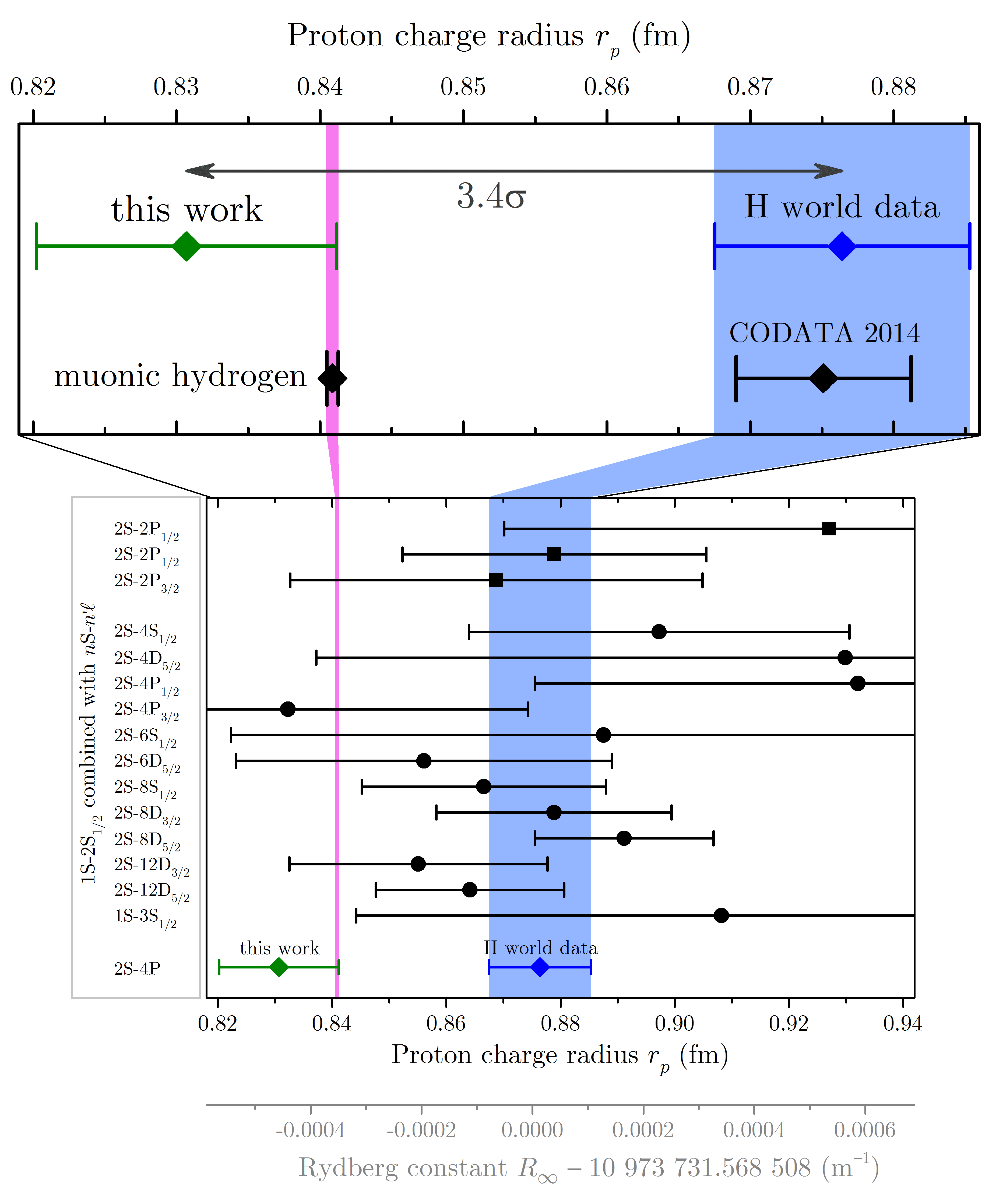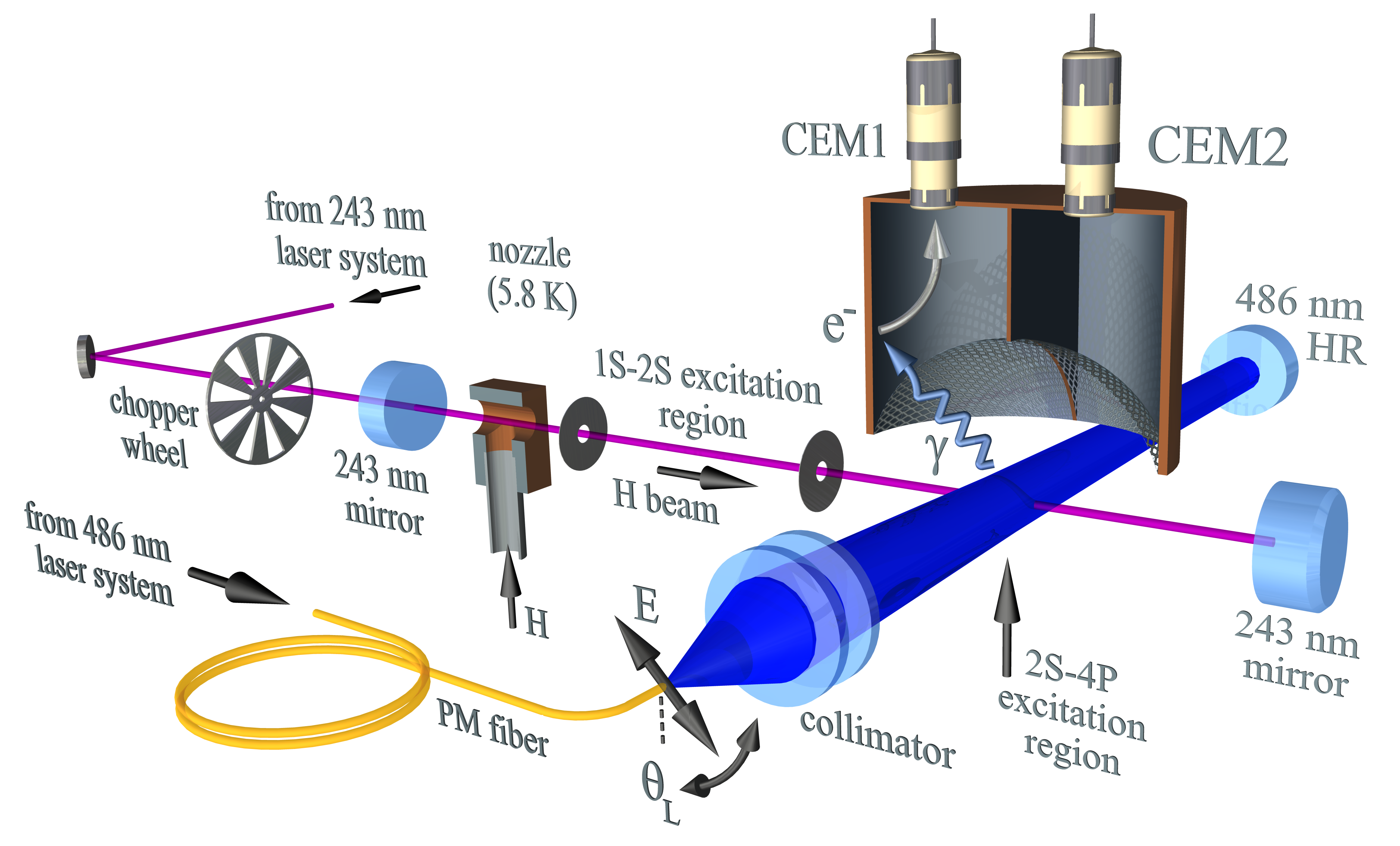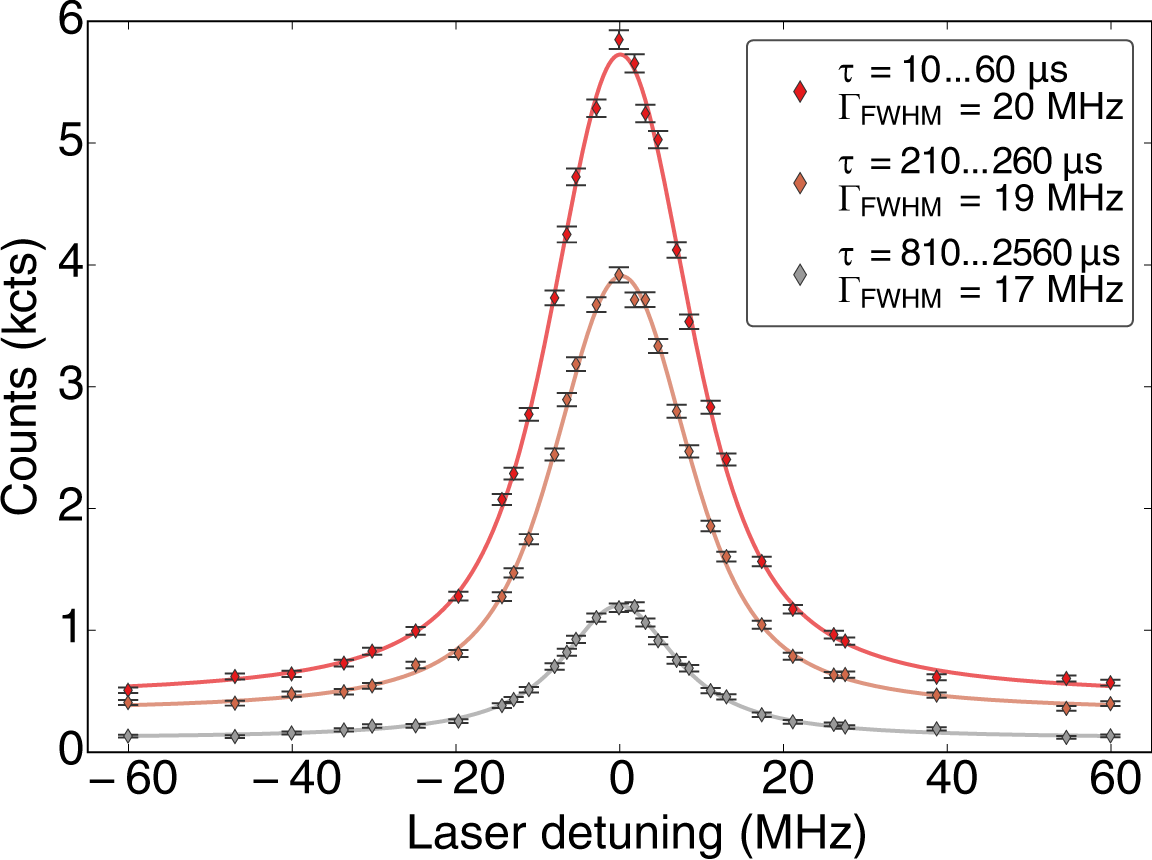
The hydrogen 2S-nP transitions
We are determined to measure a series of transition frequencies between the metastable 2S state, that acts as the ground state here, and the nP levels in atomic hydrogen. This is to test Quantum Electrodynamics (QED). Since QED contains adjustable parameters, one needs more measurements of independent frequencies than there are parameters. Using the fine structure constant and the electron to proton mass ratio from other experiments that are more sensitive to these parameters, we are left with the Rydberg constant Ry and the proton charge radius rp. This means that the second most accurate measurement dominates the uncertainty of the two parameters. Additional measurements then set a limit on the accuracy of the QED test. Therfore there is currently no point in trying to improve the 1S-2S transition frequency, that already has by far the lowest uncertainty.
The motivation to measure the 2S-nP transition frequencies is similarly, to the
1S-3S experiment.
The more transitions frequencies are measured, the better QED can be verified or disputed.
Note that the actual values for Ry and rp obtained in
this way are not relevant here. Only their consistency matters. The figure below summarizes the
situation as of 2017. Several transition frequencies are combined with the most accurate
1S-2S frequency that provides an anchor in this analysis. One can see that the
our value from the 2S-4P measurement
and the value from the 2S-2P transition in
muonic hydrogen
agree with each other, but together they disagrees with most other measurements, at least
when the latter are combined ("H-world" and "CODATA 2014"). Muonic hydrogen is an artificial
short-lived atom where the electron in a regular hydrogen atom is replaced by its heavier brother
the muon. With newer data that is included in a similar plot
here, does not
mitigate the situation.

Laser spectroscopy of the 2S-4P transitions
Utilizing the 1S-2S beam apparatus as a well-controlled and reliable cryogenic source
of hydrogen atoms in the metastable 2S state, we are currently measuring transition
frequencies from the 2S state to higher lying P-states in H. In particular, we
studied the 2S-4P transition at 486 nm, since this laser wavelength corresponds to
twice the wavelength needed for the 1S-2S experiment and thus a well-characterized
laser is available to us.
Experimental layout of the 2S-4P experiment
A schematic view of our experimental setup for 2S-4P spectroscopy is shown in the figure above. The hydrogen atoms thermalize at the inner walls of a copper nozzle held at 5.8K by a cryostat. The emerging atomic beam is collimated by two apertures and overlaps with 243nm radiation from a preparation laser circulating in an enhancement cavity. This radiation allows for a Doppler-free two-photon excitation of the 1S-2S transition, resulting in hydrogen atoms in the 2S state. In contrast to electron-impact excitation, the standard scheme of 2S excitation for the optical measurements, this optical excitation scheme preserves the atoms' low thermal velocity and almost exclusively populates zhe 2SF=1/2 hyperfine level.
Excitation of the 2S-4P transition takes place in a separated region. Here, light from the spectroscopy
laser at 486nm crosses the beam of 2S atoms at an angle close to 90°. In this way, the first-order
Doppler shift due to motion of the atoms relative to the propagation direction of the laser light
is minimized. To further suppress the Doppler shift, which constitutes the biggest source of uncertainty
for this measurement, we developed the
active fiber-based retroreflector (AFR) scheme.
In this scheme, the transition is simultaneously driven by two actively-stabilized, antiparallel
phase-retracing laser beams, resulting in Doppler shifts of equal magnitude, but opposite signs and
thus no net shift of the resulting line shape. The 4P state rapidly decays back to the 1S ground state,
emitting a Lyman-alpha photon. The photoelectrons ejected by these energetic photons from our
alluminum detector walls are detected in channel electron multipliers CEM1 and CEM2 and the output of
these detectors is our signal. By scanning the frequency of the spectroscopy laser, the 2S-4P resonance
can recorded, with typical examples of the resulting data shown in the figure below. We periodically
switch off the preparation laser and thus the production of 2S atoms using a chopper wheel and record
the signal as a function of delay time. Different delay times then correspond to the sampling
of different atomic velocity groups. With this, we can experimentally confirm the validity of the
Doppler shift suppression by evaluating the resonance position as a function of atomic velocity.
In order to determine the transition frequency to a precision of a few parts in 1012,
the atomic resonance has to be sampled many thousands of times and the results averaged.
2S-4P resonance for different delay times
Current Members
Lothar Maisenbacher, Vitaly Wirthl, Thomas Udem
Former Members
Axel Beyer, Nikolai Kolachevsky
If you are considering joining our team as a Bachelor, Master or PhD student, or as a Postdoc, please email to: Thomas Udem
Further Reading
A. Beyer et al., Two-photon frequency comb spectroscopy of atomic hydrogen, Science 358, 79 (2017)
